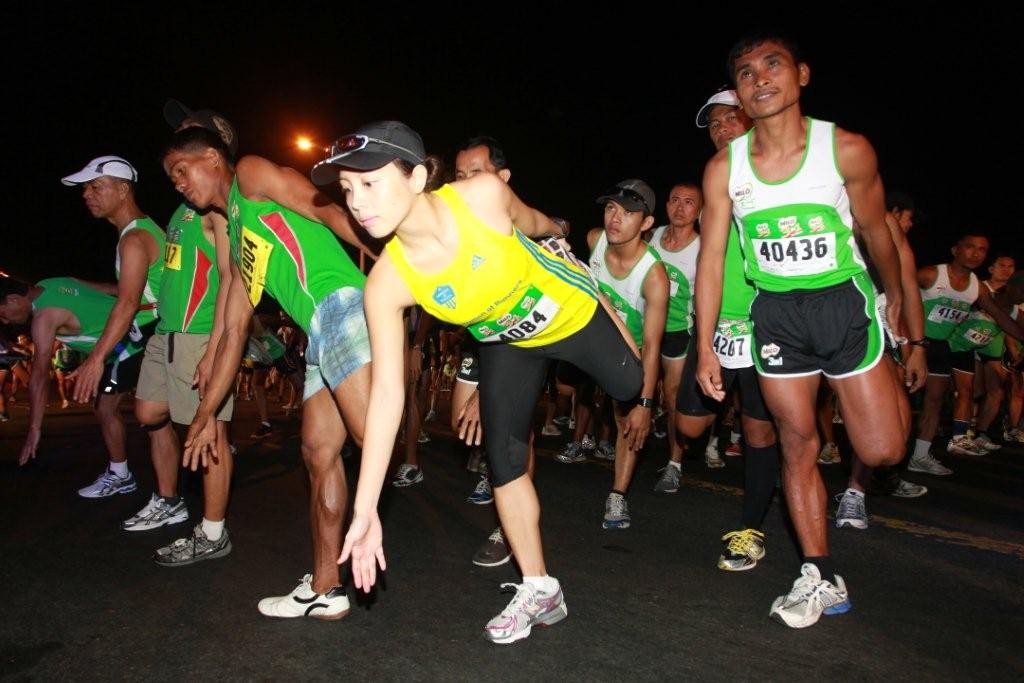Signing up for your first marathon? Awesome! Now its time to get you from here to the starting line. A marathon is very different from a short fun run and is a distance youve never tested your body at. You need to be smart about what you do from here on out.
Here are seven tips to help you conquer your first marathon.
Have a target time.
Most beginner marathoners will state that their goal is just to finish, hesitant to set a goal that they are not sure they can achieve. However, having a target time in mind will help you train with purpose, instead of just logging junk miles.
Use a finish time calculator to help you predict what time you can possibly achieve based on your finish time from a shorter race. While this may not be accurate down to the minute, you can see what you can reasonably and potentially achieve.
Plan and follow-through.
To avoid wasting time and effort, its a good idea to have a training plan. What’s even more important is to have a training plan that you can conceivably commit to, considering the amount of time youre able to devote to marathon training during the week.
Enlisting the help of a coach aside from following a training plan can motivate you, as well as show you blind spots in your training or recovery. Thus, youll be more consistent. Consistency in training matters just as much as the big mileage days. Following a training plan under a coach not only helps you do the training you need to do, but also ensures you have enough time to recover so you dont break your body down.
You want to get on that starting line fit and ready; you dont want miss your first marathon or perform less than your best because you were sick and/or injured in the lead-up.
Simulate and rehearse.
Training days and test races are the perfect time to test shoes, apparel, and nutrition products that you plan to use on your big day. Breaking in shoes allows you to see if there are hot spots they rub on your feet that can turn into blisters. Areas that chafed previously on training runs will teach you to apply lubricant in those spots on race day. Problems absorbing nutrients from gels and sports drinks can be solved long before the actual marathon.
Also, if you can conduct your training sessions at the same time you expect to start the marathon, or do some portion of training in similar conditions (heat and humidity, cold, etc.), it helps your body adjust so that on race day its not a shock to your system.
Experienced runners swear by the adage Nothing new on race day as a way of minimizing factors that can ruin race-day performance and experience.
Taper.
A proper marathon training plan not only gradually increases mileage and total training time, but also helps you back off a few weeks before the race. The taper gives your body the opportunity to recover and rebuild and allows your immune system to bounce back (endurance training suppresses your natural immunity). Mentally, it refreshes you; you want to show up on the starting line raring to run, not jaded and overtrained.
From the gunstart, build into your race effort for a strong finish.
Ive been told, The shorter the race, the longer the warm-up. While you should still warm up prior to a marathon gunstart, treating the first few kilometers of the race like an extension of the warm-up helps you find your rhythm. Running will always feel easy at the beginning, but over a longer period of time will start to feel progressively harder. Marathons are as much a mental challenge as they are physical: if you start off hot, being unable to sustain that effort can demotivate you. If you can stay positive with a can-do attitude and can bolster this with a running strategy that allows you to feel good about how youre doing at any point along the race, this does wonders for taking you all the way to the finish line.
Take your time at aid stations.
A marathon is forty-two kilometers long. Some runners will skip aid stations thinking this will shave time off their finishes, but you should instead view aid stations as an opportunity to give your body what it needs to go the distance. You can choose to walk through aid stations to allow you to eat and drink properly instead of spilling food and drink all over your shirt.
The length of your first marathon can also be overwhelming, but using a strategy of going from aid station to aid station allows you to break the race up into manageable chunks and can refresh you mentally.
Aid stations are there for your benefit; use them.
Celebrate all the way through the marathon, from start to finish.
Race day is the culmination of months of hard work and sacrifice, and to get to the starting line is no easy feat. Getting on the starting line is already a triumph — a triumph over defeatist attitudes saying you cant do this, a triumph over busy schedules, a triumph over physical limitations so that you can make a dream come true. Treat the marathon as a celebration, a party on the streets. While more people are running marathons, that doesnt diminish the fact that running 42 kilometers is still a massive achievement.
Running a marathon is a life-changing experience that gives you a look into who you are and what you can accomplish. Enjoy it!



Running my first marathon, Cebu Marathon, in January! I’m more nervous about being able to fully complete my training, because I know it’ll make or break race day. Thanks for the tips, Kikay! 🙂
You’ll do great in January 😀 Come race day, trust the training.
Mitz
Thank you Ms Ana ?